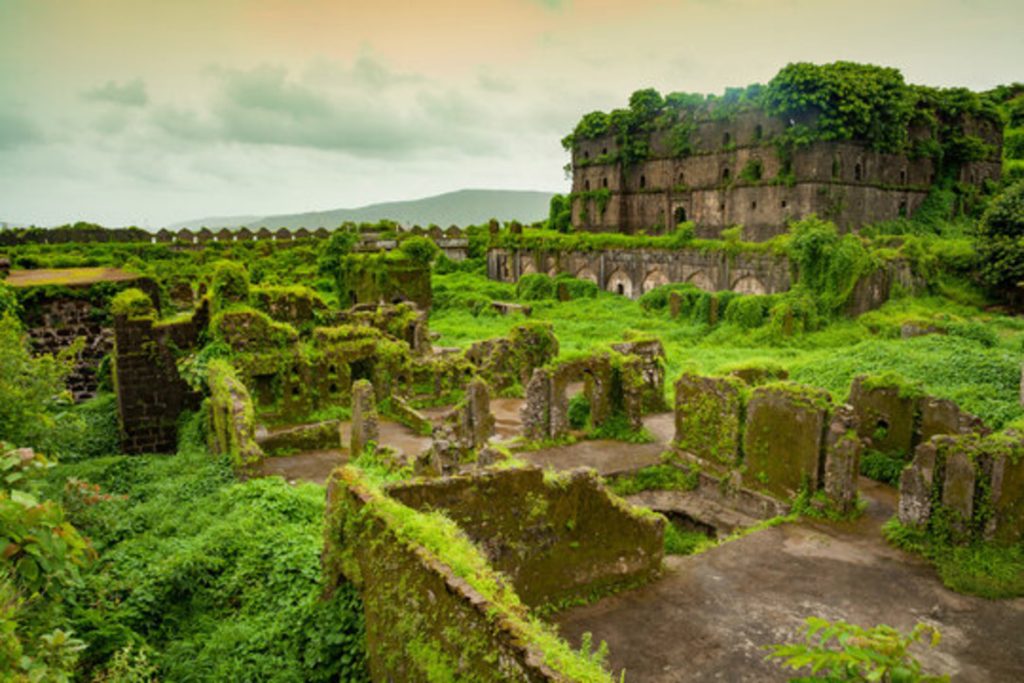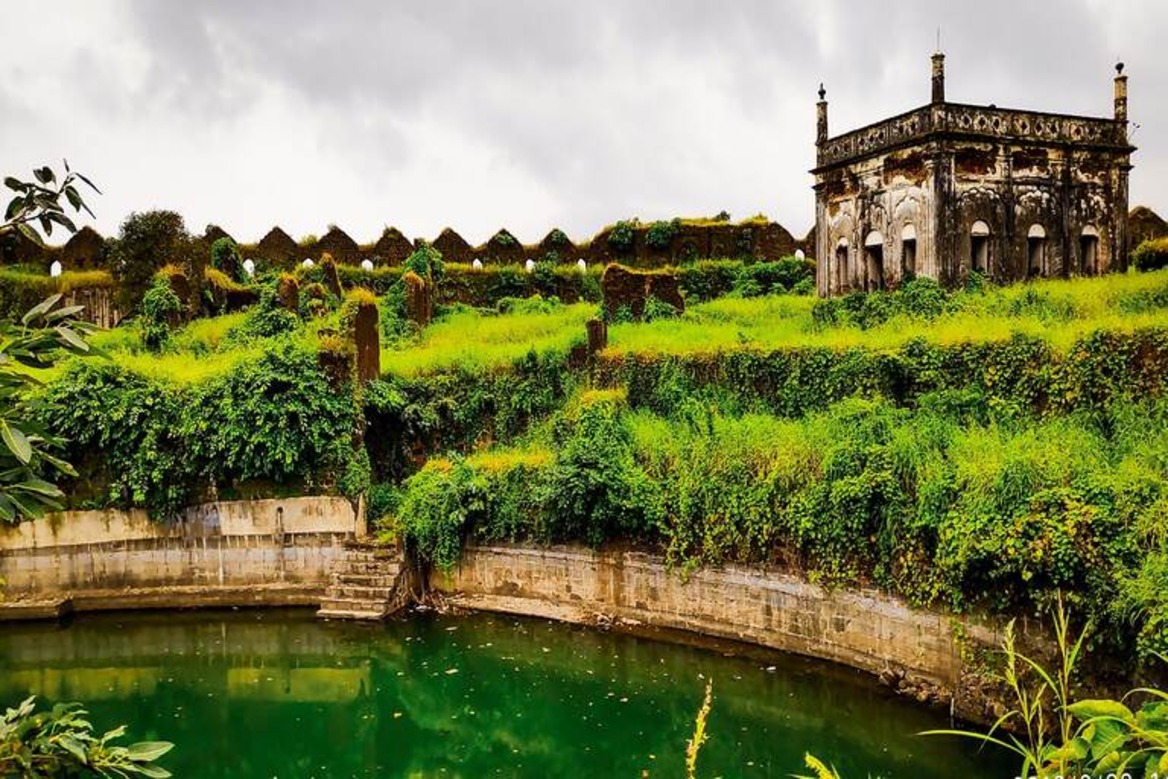The builders built the Janjira fort on a small island off the coast of Maharashtra in the Arabian Sea. Witnessing the sea’s waves smash against this structure’s strong ramparts is an amazing sight. The fort’s surrounding sea provided an unbreakable moat, making it a strong defense against any attacker. The essential trade route that links Broach, Daman, Diu, and Mangalore passes right by the fort. The marine traffic of the trade routes that connected the Indian subcontinent to Europe, Persia, and Africa was under the jurisdiction of this fort. As a stopping point on major trade routes, the Janjira Fort attracted traders from near and far. Ivory, gold, silk, horses, and slaves were all part of the fort’s rich trade in the 1500s.
The Origins
The Arabic phrase Jazeera, which literally translates to “an island in the middle of the ocean,” is where the fort gets its name. The Koli tribesmen were once thought to have lived in a tiny fishing village on the island where the fort is situated. The Kolis first built a small barricade using thick wooden logs to defend themselves from the sea pirates that were attacking them.
The Sidis Of Janjira Fort
However, the Sidis are the ones who constructed the current structure after recognizing the location’s strategic importance. According to legend, there were several obstacles in the way of finishing the fort. It is thought that the then-reigning Sidi ruler offered his 22-year-old son as a sacrifice in order to solve these difficulties. The majority of the Sidis, who were originally from Abyssinia, were sent to the Indian subcontinent by the Delhi Sultanate as slaves, bodyguards, and soldiers. But through their bravery and careful planning, they gained important leadership roles and ultimately took over as Janjira’s masters. From this group came Malik Amber, who rose to become the commander-in-chief of the Nizam Shah of Ahmad Nagar.
The Sidis remained unbeaten after engaging in numerous deadly sea battles with the Dutch, Portuguese, French, British, Mughals, and Marathas. According to legend, after Malik Amber was frequently defeated by the Mughal emperor Jahangir in combat, the emperor ordered that a likeness of Amber be constructed. Then, in an attempt to let out his anger, the Emperor would shoot arrows at it. The Sidis were able to participate in several alliances against the Marathas because of their fortress at Janjira.
The Sidis were made mansabdars under Aurangzeb’s rule to aid the Mughals in controlling the Maratha incursions. In a similar vein, they worked along with the British and were awarded the title “Nawab” under their supervision. Remarkably, Sidis were not kings. Every now and then, a strong community leader was selected to defend the Janjira fort. “Wazir” was the name of the selected leader. The Sidis did not become dynastic until after 1879 CE, when the title of Nawab was introduced.
Continuation of Sidis
Under Surul Khan (1706–1732 CE), who built significant fortresses and later increased the size of the kingdom of Janjira, Sidi’s power peaked. Under him, Sidis held 22 mainland forts that the Marathas also wanted to occupy. The Sidis were able to expand their domain to the mainland thanks to Janjira’s advantage. Three Sidi rulers’ tombs are located at an acropolis that was built about a km south of Rajapuri, a coastal town that provides access to the Janjira fort. The Khokhari Tombs are the name of this complex.
The Sidi kings also constructed Ahmedganj Palace, also known as Nawab Palace, on the mainland. The then-ruler built this palace in 1885 in the Franko-Turkish architectural style. In 1676 CE, the Marathas built the sea fort known as Padmadurg or Khasa Fort after they realized the strategic significance of Janjira Fort and failed to capture it. Unlike Janjira, the fort in the northeast eventually became abandoned because it lacked a freshwater source.

Features Of Janjira Fort
The Arabian Sea’s blue waves encircle Janjira Fort, which boasts more than nineteen rounded porches or arches. The strong walls of the fort, which stand 40 feet tall, show the mastery of its builders.
1. You could see the rich architectural features, including elaborate ceilings and spacious courtyards, across the fort’s palace.
2.You can identify images of Burhankhana, along with a special carving showing a lion’s claw capturing four elephants and an elephant encircling the lion’s tail.
3. The innovative water delivery system guaranteed a steady supply of clean water to Janjira Fort occupants. Its complex system of deep well building and rainfall gathering techniques demonstrated highly developed engineering abilities.
4. The “Mahadarwaja,” the fort’s main entrance, is a striking portal surrounded by bastions and guarded over by a huge iron door.
5. Cannons, a maze-like layout designed to mislead the other side, and 26 bastions made up Janjira Fort’s powerful defense system.
6. “The invincible fort earned its reputation due to its impassable walls, secret passageways, and fortified defenses.
Interesting Facts About Janjira Fort
1. For all of its history, Janjira Fort was impregnable.
2. A significant hub for maritime trade in the area was the fortified port and the Janjira Sultanate.
3. Residents of the fort comprised Arabs, Europeans, and Siddi ancestors, among other ethnic groups.
4. Inside the fort, a deep freshwater well continues to function despite the saltwater around it.
5. The Kalal Bangdi, Landakasam, and Chavari guns were reportedly among the 572 weapons in the fort.
Conclusion
A must-see location for everyone interested in architecture and history is Janjira Fort. The fort serves as a reminder of Maharashtra’s rich cultural legacy and is a stunning illustration of the architectural genius of the past. Make sure to include a visit to Janjira Fort in your schedule if you are considering a vacation to Maharashtra.
If you are passionate about reading more about Maratha culture and Heritage, click here.

